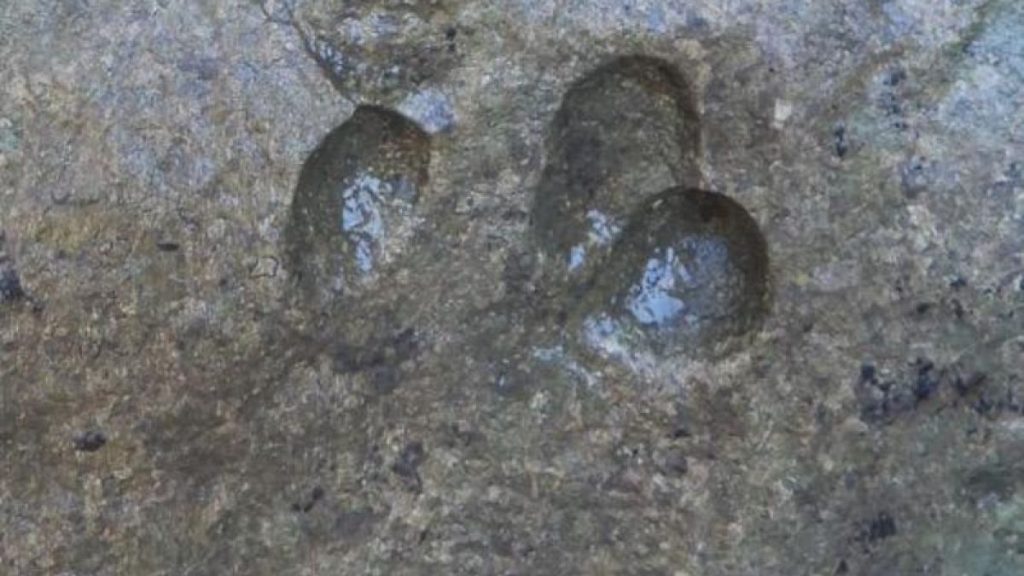A remarkable scientific discovery has been made on the Italian island of Sardinia, revealing vital palaeontological evidence that attests to the presence of dinosaurs. During a documentary filming project that explored the region’s geomorphological landscape, a team of scientists uncovered fossilized footprints near Baunei in Ogliastra. This extraordinary find not only adds to the wealth of knowledge about Sardinia’s rich history but also marks the first evidence of dinosaurs from the Mesozoic era in the area.
| Article Subheadings |
|---|
| 1) Discovery of Dinosaur Footprints in Sardinia |
| 2) The Scientific Team Behind the Discovery |
| 3) The Significance of the Footprints |
| 4) Characteristics of the Discovered Dinosaur |
| 5) Remarks from Experts and the Impact of the Find |
Discovery of Dinosaur Footprints in Sardinia
The discovery took place in the picturesque countryside surrounding Baunei, a location known for its stunning landscapes and rich geological history. The investigation was part of a documentary focused on the unique geomorphological features of Sardinia. While filming what was intended to be a straightforward exploration, the scientific team inadvertently uncovered fossilized dinosaur footprints. This unexpected finding adds significantly to our understanding of the prehistoric life that once inhabited the region.
The Scientific Team Behind the Discovery
The team responsible for this groundbreaking discovery consists of accomplished palaeontologists and former lecturers from distinguished universities in Italy, including Professors Antonio Assorgia, Sergio Ginesu, and Stefania Sias. Their expertise in the field of palaeontology, particularly concerning the Mesozoic era, enabled them to analyze the significance of the footprints found in Baunei effectively. This collaborative effort underscores the importance of interdisciplinary work in scientific research, demonstrating how combined knowledge in various fields can lead to new discoveries.
The Significance of the Footprints
The footprints of the theropod dinosaur found in Sardinia are particularly noteworthy because they represent the first evidence of dinosaur presence in the Mesozoic era for the island. The fossils were preserved in rocks from the Jurassic period, which date back approximately 165 million years. This indicates that dinosaurs occupied these regions long before they became the vibrant landscapes they are known for today. Further investigation into these fossils could yield insights into the behaviour and ecology of these ancient creatures.
Characteristics of the Discovered Dinosaur
According to the initial analysis by the team, the discovered dinosaur, affectionately named ‘Bibi,’ is believed to be a female specimen. Although further scientific investigation is required for full verification of this aspect, preliminary assessments suggest that Bibi was a bipedal dinosaur, likely a herbivore. Expert palaeontologist Marco Zedda, associated with the University of Sassari, elaborated on the animal’s physical characteristics, noting its size as approximately 120 to 160 centimeters in length. Such details emphasize the intricate reconstruction possible from mere footprints, shedding light on the fascinating existence of these creatures millions of years ago.
Remarks from Experts and the Impact of the Find
This remarkable discovery has not only excited scientists but has also caught the attention of the wider public. Francesco Ginesu, the Sole Director of the production company behind the documentary, described the find as exceptional and unexpected. He emphasized that discoveries like this can radically shift existing paradigms of knowledge within the scientific community. “As often happens in science, it has the power to radically change what we thought we knew,” he stated, underscoring the significance of serendipitous finds in the world of paleo-scientific research. The footprints from Baunei stand as direct evidence of life forms in an area previously thought to lack such clear archaeological markers.
| No. | Key Points |
|---|---|
| 1 | The discovery of dinosaur footprints in Sardinia marks the first evidence of Mesozoic-era dinosaurs on the island. |
| 2 | The scientific team includes experts from the Universities of Sassari and Cagliari. |
| 3 | The footprints belong to a theropod dinosaur that lived approximately 165 million years ago. |
| 4 | The dinosaur, named ‘Bibi,’ is characterized as a biped and likely a herbivore. |
| 5 | Experts emphasize that discoveries like this can reshape understandings of prehistoric ecosystems. |
Summary
In summary, the discovery of dinosaur footprints in Sardinia offers profound insight into the region’s ancient past, showcasing a long-lost world where dinosaurs roamed the landscapes we now recognize. This pivotal find, made by a dedicated scientific team during an unrelated documentary project, has the potential to reshape our understanding of the prehistoric life that existed on the island. As more studies are conducted, the full implications of this discovery will reveal what life was like in Sardinia during the Jurassic period, confirming the island’s significant role in the Earth’s evolutionary history.
Frequently Asked Questions
Question: What is significant about the dinosaur footprints found in Sardinia?
The footprints represent the first evidence of dinosaur presence in the Mesozoic era in Sardinia, providing crucial insights into prehistoric life on the island.
Question: Who discovered the dinosaur footprints?
A scientific team composed of experts from the Universities of Sassari and Cagliari discovered the footprints during the filming of a documentary.
Question: What can be inferred about the dinosaur named ‘Bibi’?
Bibi is believed to be a bipedal herbivore, around 120 to 160 centimeters long, and lived approximately 165 million years ago during the Jurassic period.


